Nail fungus is stubborn. You want the straight answer: will miconazole clear it, or are you about to waste six months and a stack of patience? Here’s the short version-miconazole isn’t a first-choice nail treatment, and for typical toenail fungus (dermatophytes), evidence it works is weak. It can help in specific cases (yeast involvement at the nail fold), but if you’re chasing a proper cure for thick, discoloured nails, there are better options. I’ll show you exactly when miconazole makes sense, the right way to use it if you still want to try, how long it takes, what to expect, and the treatments that actually move the needle.
TL;DR: Is Miconazole Effective for Nail Fungus?
Key takeaways
- Miconazole is not a proven first-line treatment for onychomycosis (nail fungus). It doesn’t penetrate the nail plate well.
- It may help if the problem is mainly yeast (Candida) around the nail fold or a very superficial infection. It’s weak against common nail dermatophytes.
- For proper nail infections, oral terbinafine or prescription topicals like efinaconazole (and, in Australia, OTC amorolfine) have much better cure rates.
- Expect any nail treatment to take 6-12 months for toenails. The nail must fully grow out.
- If you’re on warfarin, miconazole can interact (rare with small topical amounts, but reported). Check with your GP.
Jobs you likely want done right now:
- Decide if miconazole is worth trying for your nails.
- Know exactly how to apply it and for how long if you do try.
- Tell if it’s working by week 6-12, and when to switch plans.
- Compare real-world alternatives (cost, cure rates, side effects) in Australia.
- Know when to see a doctor, get a test, or go oral therapy.
How to Tell If Miconazole Is Right for Your Case (and When It’s Not)
Onychomycosis is usually caused by dermatophytes (Trichophyton rubrum is the classic offender). These fungi live in the nail keratin. The nail plate is hard to penetrate, which is why most regular antifungal creams (including miconazole) struggle to cure it.
Where miconazole can make sense:
- You have redness, swelling, or tenderness of the nail fold (paronychia), especially if you use your hands in wet work. Yeast (Candida) often drives this, and miconazole can help.
- You see a very superficial powdery white patch on the nail surface (superficial white onychomycosis). If you can file it back easily, a topical azole can sometimes keep it in check.
- You’re using it as an add-on for athlete’s foot (tinea pedis) and interdigital maceration around the toes while you arrange a stronger nail plan.
Where miconazole is unlikely to work well:
- Thick, yellow, crumbly toenails with involvement >20-30% of the nail plate, or multiple nails affected.
- Infection clearly starting from the distal edge and moving proximally (classic dermatophyte pattern).
- Recurrent or long-standing infection, diabetes with significant nail changes, or prior failure of weaker topicals.
What the evidence says:
- Cochrane reviews and clinical guidelines consistently rate azole creams (like miconazole) as low-evidence options for nail fungus because of poor nail penetration and a lack of robust cure data.
- Australian Therapeutic Guidelines (2024) and GP guidance emphasise oral terbinafine for dermatophyte nails, with topical efinaconazole or amorolfine for mild disease or when oral meds aren’t suitable.
- Complete cure rates with proven topicals (efinaconazole, amorolfine) are modest but real; miconazole lacks comparable nail-focused trials.
Bottom line: If your nail disease is mild, superficial, or yeast-dominant at the fold, a trial is reasonable. If not, skip to stronger options below.
Step-by-Step: Using Miconazole Safely and What to Expect
If you still want to try miconazole, do it properly. The idea is to thin the nail, clean up the surface, and keep the drug in contact long enough to matter. Set a 12-week checkpoint, and if you see zero change, change tactics.
Prep first (weekly):
- Soften and thin the nail: Soak the foot in warm water for 10 minutes. Pat dry. Gently file the nail surface with a coarse emery board to remove loose, chalky keratin. If the nail is very thick, a pharmacist can suggest a 40% urea preparation used nightly for 1-2 weeks to thin it.
- Trim straight across and clean edges. Don’t cut into the corners; avoid digging at the nail fold.
Daily routine:
- Wash and dry thoroughly, especially between toes.
- Apply a thin layer of 2% miconazole cream to the nail surface, the undersurface at the tip if you can reach it, and the surrounding nail folds. Massage it in for 30-60 seconds.
- Optional occlusion for 2-4 weeks (to boost contact): After the cream absorbs, you can apply a small amount again and cover with a breathable adhesive bandage overnight. Watch for irritation; stop occlusion if the skin gets sore.
- Let it dry before socks. Use breathable socks; change them daily.
- Treat tinea pedis at the same time (between toes and soles) to reduce reinfection.
Frequency and duration:
- Twice daily for 6-12 weeks for paronychia/yeast at the nail fold.
- Twice daily for at least 12 weeks for superficial nail involvement. If nothing budges by week 12, cut losses.
- For deep nail involvement, this won’t be enough-switch to proven options.
What improvement looks like:
- By week 4-6: less tenderness/redness at the nail fold; athlete’s foot clearing; nail stops getting worse.
- By week 12: a thin band of clearer nail growing from the base (lunula) and reduced surface chalkiness. If the diseased area is unchanged, escalate.
Safety checks:
- Miconazole is generally well tolerated topically. Mild burning or irritation can happen.
- Warfarin users: miconazole (especially vaginal formulations) has raised INR in case reports. Nail use is a smaller exposure, but flag it to your GP and monitor more closely if you’re using it daily for months.
- Pregnancy/breastfeeding: topical use is commonly considered low risk; double-check with your GP or pharmacist.
- Stop and seek advice if you get significant redness, swelling, or rash.
Smart add-ons:
- Foot hygiene: dry between toes, rotate shoes, use antifungal spray or UV shoe sanitizer if you’re prone to athlete’s foot.
- Disinfect nail tools with isopropyl alcohol after each use.
- Socks: moisture-wicking blends. Change after sport.
When to abandon ship:
- No improvement by week 12, or worsening at any time.
- Multiple nails involved, or nail plate >30% diseased.
- Recurrent infections despite good foot care.
Better Alternatives, Combinations, and When to See a Doctor
Here’s how miconazole stacks up against options that actually have nail-focused data. Costs and availability reflect Australia in 2025 and will vary by pharmacy.
| Treatment | How it’s used | Typical duration | Complete cure rate (toenails) | Best for | Key cautions | AU availability / ballpark cost |
|---|---|---|---|---|---|---|
| Miconazole 2% cream | Applied to nail surface and folds; often with filing/occlusion | 12+ weeks | Unknown/low for dermatophyte nails | Paronychia (yeast), superficial patches, athlete’s foot | Possible warfarin interaction; limited nail penetration | OTC; low cost |
| Amorolfine 5% lacquer | Apply 1-2× weekly after filing | 6-12 months | ~12-18% (mild to moderate) | One or few nails, distal involvement <50% | Patience needed; keep filing | OTC in AU; moderate cost per bottle |
| Efinaconazole 10% solution | Daily brush-on | 11-12 months | ~15-18% | Mild-moderate disease; can be used if oral meds not suitable | Pricey; adherence crucial | Prescription/private in AU; higher cost |
| Ciclopirox 8% lacquer | Daily with weekly removal | 6-12 months | ~6-9% | Mild cases; often less effective than efinaconazole | Labor-intensive | Limited availability in AU |
| Oral terbinafine 250 mg | Daily tablet | 12 weeks (toenails) | ~38-50% complete cure; ~70% mycologic cure | Dermatophyte nails, multiple or thick nails | Check drug interactions; rare liver issues-LFTs if risk factors | Rx; often PBS-subsidised; low to moderate monthly cost |
| Oral itraconazole | Daily or pulse dosing | 12 weeks | Lower than terbinafine for dermatophytes | Non-dermatophyte or yeast cases when terbinafine unsuitable | More drug interactions; LFT monitoring | Rx; moderate cost |
What the data behind these numbers looks like:
- Systematic reviews (Cochrane 2021; BMJ clinical updates; JAMA Dermatology trials) put oral terbinafine at the top for dermatophyte nails, with complete cure around 38-50% after a single 12-week course. Mycologic cure rates hover near 70%.
- Efinaconazole’s complete cure sits around 15-18% with daily use for 48-52 weeks-modest, but real-especially when you debride regularly.
- Amorolfine 5% lacquer, widely used in Australia, fares better than ciclopirox and is easy to apply weekly. It’s reasonable for mild disease or maintenance after oral therapy.
Good combinations:
- Oral terbinafine + weekly amorolfine: improves outcomes versus oral alone for stubborn nails; helps prevent relapse.
- Efinaconazole daily + monthly professional debridement: boosts penetration and speed.
- Treat athlete’s foot at the same time to cut reinfection risk.
When to see your GP or a podiatrist in Australia:
- You’re unsure it’s fungus (psoriasis, trauma, and lichen planus can mimic it).
- Multiple nails are affected, you have diabetes, circulation issues, or pain.
- No change by 12 weeks of any topical plan.
- You’re considering oral therapy-get a nail sample for microscopy/culture first to confirm the organism. This is standard practice before months-long oral meds.
Quick advice on costs here in Australia (2025):
- Generic terbinafine is usually inexpensive on PBS once prescribed-often a few dollars per week.
- Amorolfine lacquer is OTC and moderate in cost per bottle; one bottle can last weeks if you’re treating one nail.
- Efinaconazole is private script and pricier; many chemists can order it in.
FAQ, Checklists, and Next Steps
Mini‑FAQ
- Can miconazole cure nail fungus by itself? It’s unlikely for classic dermatophyte toenail infections. It may help with yeast at the nail fold or very superficial disease.
- How long should I give it before I call it quits? Twelve weeks is a fair trial. No clear improvement? Switch.
- Is miconazole safe if I’m on warfarin? There are case reports of raised INR with miconazole (especially vaginal use). For nail-only topical use, risk is lower but not zero. Tell your GP and consider closer INR checks.
- What if the lab says Candida, not dermatophyte? Topical azoles (including miconazole) can be effective for Candida around the nail. For Candida inside the plate, itraconazole may be preferred.
- Do I need a culture before treatment? Not for a small topical trial. But before oral therapy, yes-get microscopy/culture to confirm the organism.
- Why do topicals take so long? They don’t kill fungus deep inside immediately-they protect the new nail growing out. Toenails grow 1-2 mm per month; a big toe can take 9-12 months to fully replace.
- Can I paint over topical treatments? With lacquers like amorolfine and ciclopirox, follow the product schedule (they’re designed for layers). With creams/solutions, avoid nail polish; it blocks penetration.
- Does laser work? Evidence is mixed, and costs are high. If it works, recurrence rates are similar unless you address reinfection risks.
Quick checklist: Is a miconazole trial worth it?
- My nail disease is mild, superficial, or limited to the fold (yes/no).
- I can file the surface weekly and keep to twice-daily applications (yes/no).
- I’ll reassess at week 12 and not drag this out if there’s no response (yes/no).
- I’m treating athlete’s foot and disinfecting tools to prevent reinfection (yes/no).
- If I’m on warfarin, I’ve told my GP (yes/no).
What I’d do if this were my nail:
- If the nail is thick, discoloured, and getting worse: book a GP visit for a nail clipping and plan for oral terbinafine if a dermatophyte is confirmed. Add weekly amorolfine as maintenance after the course.
- If it’s one small superficial spot: try amorolfine weekly or efinaconazole daily for 6-12 months, with regular filing. Save miconazole for the surrounding skin/fold if it’s inflamed.
- If it’s the nail fold that’s sore and wet a lot (yeast vibe): try miconazole twice a day for 4-6 weeks, plus dryness strategies, then reassess.
Pro tips that actually help:
- Debridement is half the battle. Filing weekly or seeing a podiatrist monthly improves any topical’s odds.
- Fix the environment. Dry toes, rotate shoes, and don’t share nail tools.
- Set calendar reminders. Consistency beats potency with topicals.
- Treat both feet even if one looks fine-tinea loves asymptomatic toes.
A brief word on evidence and sources: Cochrane reviews on onychomycosis (latest updates through 2021), BMJ Best Practice summaries, JAMA Dermatology trials on efinaconazole and oral agents, and Australian Therapeutic Guidelines (2024) all point the same way-oral terbinafine leads for dermatophyte nails; efinaconazole and amorolfine have modest but measurable benefits; standard azole creams like miconazole lack strong nail-cure data. Your GP or pharmacist here in Australia can help tailor this to your meds and health history.
If you landed here searching for miconazole for nail fungus, the honest answer is: it’s fine for the skin around the nail and minor cases, but it’s not the workhorse for the nail plate itself. Pick the right tool, give it time, and set checkpoints so you’re not stuck in a year-long maybe.


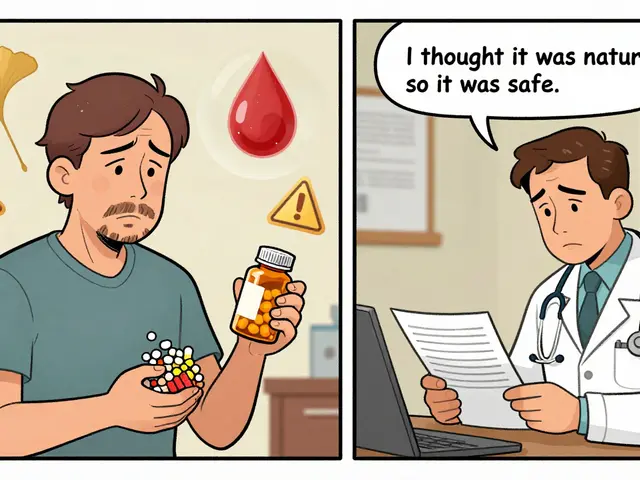
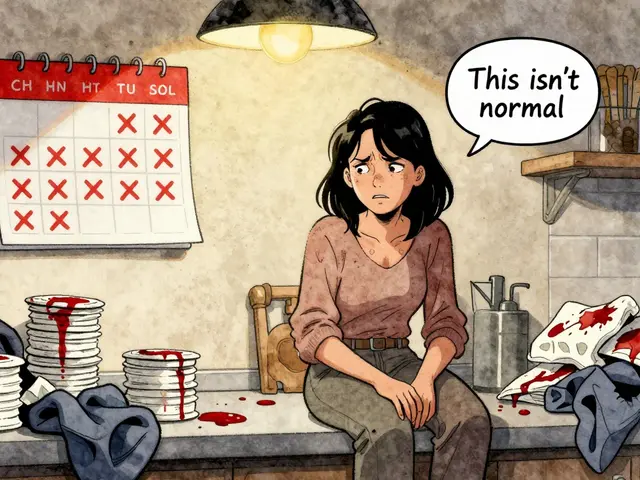
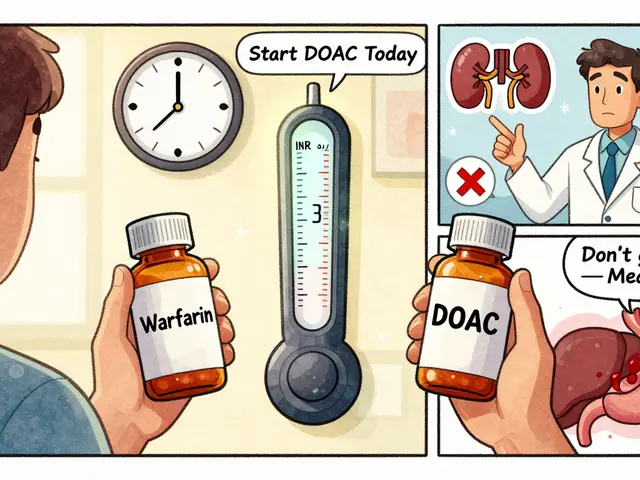

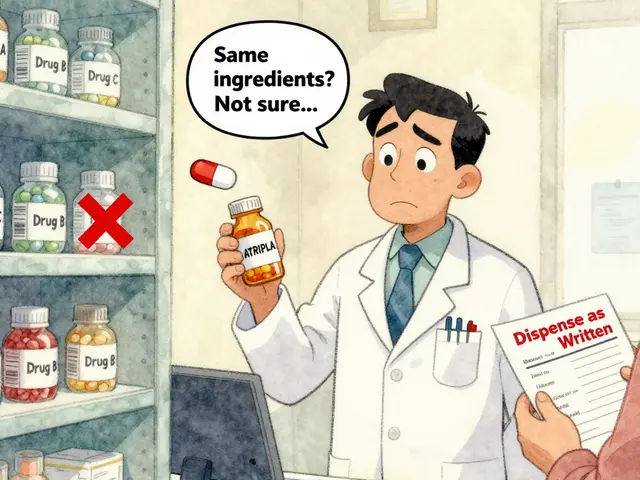
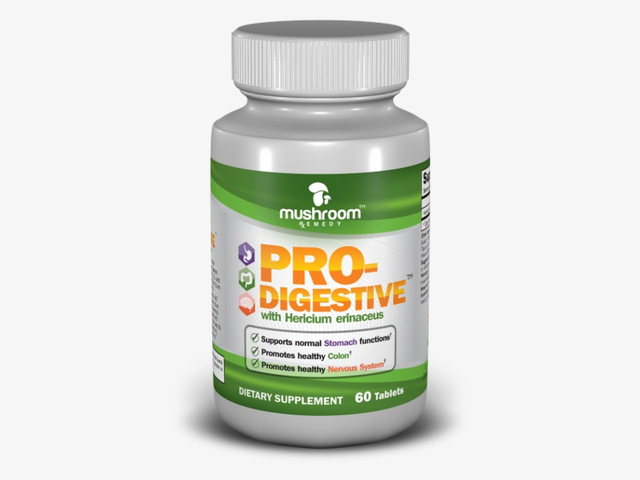
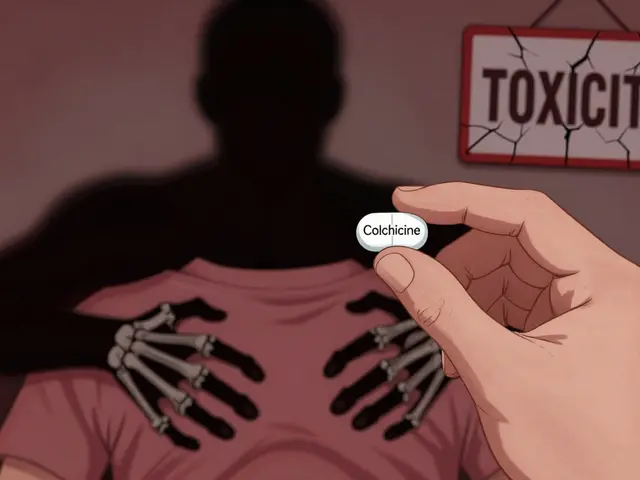
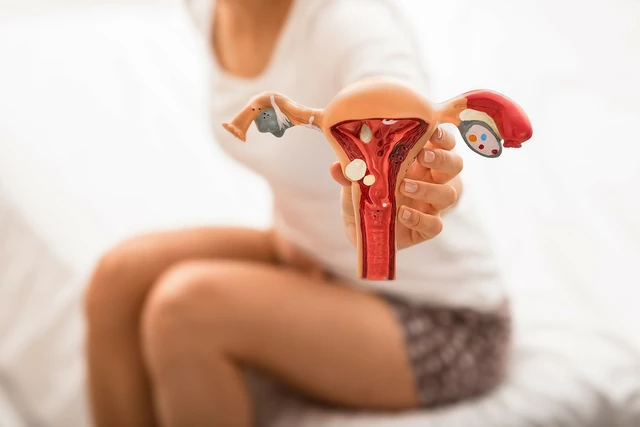

15 Comments
I tried miconazole for a weird yeast thing around my big toenail after swimming too much. It actually helped the redness go away in like 3 weeks. Not a miracle for the nail itself, but if your cuticle’s inflamed? Totally worth a shot. Just don’t expect the nail to look new.
Also, filing weekly made a bigger difference than the cream. Just saying.
Also also, dry your toes like your life depends on it. I started using a hairdryer on cool after showers. Game changer.
The nail is not a problem. The nail is a symptom. The real infection is the belief that we can chemically dominate nature with a cream bought at the drugstore. We treat the symptom because we fear the process-the patience, the discipline, the surrender to time. Miconazole is not a cure. It is a ritual. A small act of defiance against entropy.
And yet, the nail grows. Slowly. As it must. Not because of us. But despite us.
Let’s be clear: recommending miconazole for nail fungus is medically irresponsible. The evidence is negligible. The Cochrane review explicitly states this. Yet here we are, people treating their toenails like they’re applying hand lotion.
For the record, terbinafine has a 50% cure rate. Miconazole? Less than 5%, and that’s being generous. This isn’t ‘maybe it works’-it’s ‘this is a waste of money and time.’
If you’re using this instead of seeing a doctor, you’re not being proactive-you’re being negligent. Stop romanticizing OTC solutions. The science is not ambiguous.
They don’t want you to know this but miconazole is actually banned in 7 countries because Big Pharma doesn’t want you to cure fungus with $5 cream. They make billions off oral drugs and laser treatments. I got my cousin’s nail fungus cured with miconazole + vinegar soak. The doctor called it ‘miraculous’ but then refused to write it down. They’re scared. The nail is a portal. The fungus is a message. You’re being poisoned by your shoes. Or your WiFi. Or both.
Also, I used to be a podiatrist. I left the system. They paid me to lie.
Wait so you’re saying I should just... give up on miconazole? But I already bought three tubes. I’ve been using it for 8 weeks. I’m not ready to admit defeat. I mean, maybe if I apply it while I sleep? Or microwave the cream first? I just really don’t want to spend money on that expensive prescription stuff. Can I just use it with tea tree oil? I heard that works too?
Also, do you think it’s the stress? I’ve been really stressed lately.
Man, this whole post sounds like some white guy trying to sell you a solution you don’t need. In Nigeria, we use neem oil, garlic paste, and sometimes just salt water. No prescriptions. No $100 creams. We don’t need your science to know what works. Your nails are fine if you keep your feet clean and your shoes dry. You’re overcomplicating it because you’ve forgotten how to be simple.
Also, your ‘evidence’ is all from Western journals. We cured fungal infections for centuries before you even had a pharmacy.
Time is the only true antifungal agent. The nail grows. The fungus recedes. The body heals. No chemical can replace the slow rhythm of biology. Miconazole is a placeholder. A distraction. A temporary comfort. The real cure is patience. The real failure is impatience. We rush to fix what nature unfolds in months. We want a button to press. But biology does not obey buttons.
Terbinafine accelerates. But it does not replace. The nail must grow.
And it will.
Let’s not pretend this is about fungus. This is about control. We’ve been conditioned to believe that every problem has a pill, a cream, a laser, a subscription. We fear the unknown. We fear waiting. We fear the idea that maybe, just maybe, the solution isn’t in the bottle-it’s in the discipline. In the filing. In the socks you change. In the shoes you leave in the sun.
And that’s terrifying.
So we buy miconazole. We apply it. We feel like we’re doing something. We’re not. We’re just avoiding the real work.
The fungus doesn’t care about your hustle. It’s been around since before you were born. And it’ll be here after you’re gone.
But your nail? It’s still growing. Slowly. One millimeter at a time.
That’s the real miracle.
I used miconazole for about 10 weeks on a mild case with some nail fold irritation. It helped the redness, but the nail itself didn’t improve. I switched to amorolfine after week 12 and saw real progress by month 5. The key was filing every 5 days and keeping my feet dry. Also, I stopped wearing closed shoes at home. That helped more than anything.
Just be honest with yourself: if your nail is thick and yellow, this isn’t a cream problem-it’s a time and discipline problem. And that’s okay. You don’t need to rush.
Thank you for this incredibly thorough breakdown. I’ve been battling toenail fungus for over two years and was about to give up-until I read this. I started using terbinafine last month after getting a culture (turns out it was Trichophyton rubrum-yep, the classic). I’m on week 6 now, and I can already see a sliver of healthy nail at the base. It’s slow, but it’s happening.
Also, I bought a UV shoe sanitizer. Best $40 I’ve ever spent. My feet have never felt this clean.
Don’t give up. It takes time, but it’s worth it. 💪
Miconazole is for people who don’t want to do the work. If your nail looks like that, you need a prescription, not a drugstore cream. You’re not ‘trying it out’-you’re delaying the real solution. Stop wasting money. Get a culture. Take terbinafine. Do the thing.
Wait so you’re telling me the whole thing is just a scam? Like, all those fancy topicals are just glorified nail polish? And the real answer is just… take a pill for 3 months? That’s it? No lasers? No magic sprays? No ancient Egyptian remedy? I feel like I’ve been sold a bill of goods my whole life.
Just wanted to say I’m so glad someone wrote this. I’ve been so overwhelmed trying to figure out what to do. I tried miconazole for 2 months and felt like a failure when nothing changed. Then I found out I had yeast on my nail fold-not the nail itself. I switched to miconazole just on the skin and it cleared up in 3 weeks. 😊
Also, I started wearing open sandals in the house. Best decision ever. My feet are happier now. 🤗
Man, I used to think fungus was just some gross thing you got from locker rooms. Then I started noticing how many people have it and how little anyone talks about it. It’s like the silent epidemic. We’re all walking around with weird nails and pretending it’s fine.
But here’s the thing-it’s not about the cream. It’s about the habit. Filing. Drying. Changing socks. Rotating shoes. It’s boring. It’s slow. But it’s the only thing that works.
And honestly? I feel way better now that I’m not ashamed of my feet anymore. Even if they’re still a little weird.
Just keep going. You got this.
So you spent 2000 words to say miconazole is useless? Wow. I could’ve just said ‘nah bro’ and saved us all time. Also, your table is 90% useless because nobody can afford efinaconazole. We’re not all rich Americans. Just say terbinafine is the answer and stop pretending this is a science fair.